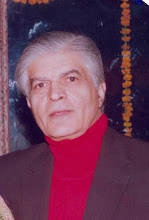
.
The Human Body
Cardiovascular Systems (CVS) (Part III)
The Thump and the Flow of Life
WHAT IS BLOOD The cells and fluid that provides the ride
Blood is a tissue kept in a fluid state for ease of transport to all parts of the body by the CVS.
The fluid in which the different cells are suspended is plasma. The cells are red cells, white cells and platelets.
In an adult the total volume is 5000 cc or 8 pints. Over 54.3% is plasma and 45% are red cells and white cells and platelets are about 0.7%.
RED CELLS the oxygen tankers
-In a normal adult there are nearly 25 billions red cells in the blood.
-They look like biconcave discs under the microscope (thinner in the middle). --They contain hemoglobin which gives the cells the red color.
-Each red cell has a life span of 120 days and they are replaced from the marrow in the bones (ribs sternum).
-The most important function of these cells is to transport oxygen from the lungs to all organs and tissue cells.
-The hemoglobin can carry 75 times more oxygen than if it were in solution in the blood.
-The oxygen in combination is freed by the hemoglobin to the tissue cells where it is needed.
-Oxygenated blood in the arteries is bright red while blood in the veins after loosing its oxygen to the tissues is dark red.
WHITE CELLS
Granulocytes Infection fire fighters
-These cells have functions related of fighting infection.
-The granulocytes and monocytes are formed in the marrow and have a life span of seven days.
-They can move out of the blood vessels and engulf bacteria and virus and digest them.
Lymphocyte Immune system black cats
-These are produced in lymph glands and can reject foreign proteins (graft rejection). They also produce antibodies.
-They have a life span varying between few weeks to years.
Platelets the blood clot squad
These are colorless disc like bodies in the blood and are needed in blood clotting.
-They are produced in the bone marrow and live for a few days.
PLASMA the fluid in the pool
-This is the cell free fluid in the blood; the oxygen in the red cells comes from the oxygen in the plasma picked up in the lungs.
- The fluid leaks out through the capillary bed to bathe the tissue cells it is the oxygen in solution in the plasma that supplies the need of the cells.
-The plasma also supplies glucose, amino acids, proteins and other nutrients.
Blood Clotting the leak plug
Blood clotting stops leaks from cuts-but if the blood clots too easily, it can clog up arteries.
-A Clot that clogs up an artery is called a thrombosis.
-When a clot builds up in one of the arteries of the heart it is called a coronary thrombosis and can cause a heart attack.
-Some people suffer from an illness which stops their bodies absorbing Vitamin K, which the blood needs to make clotting factors.
-Just one molecule of fibrin needs to form at a cut for it to set off a chain of coagulation that creates 30,000 more molecules almost instantly.
-The chemicals involved in clotting are called clotting factors.
-They are made in the liver and numbered from I to VIII (one to eight)
-Clotting factor I is called fibrinogen and encourages fibrin formation.
CVS
Symptom to remember
- Breathless –On minor effort
- Headaches (raised BP)
- Pain chest (central and left arm)
Any question should be address to: drmmkapur@gmail.com you will receive further information regarding your question.
All posts are stored in archives for access and review.





No comments:
Post a Comment